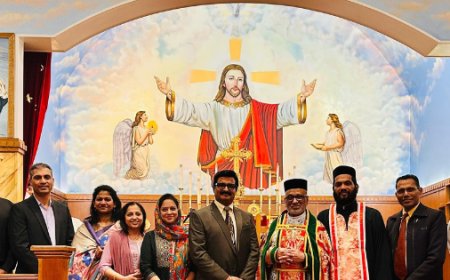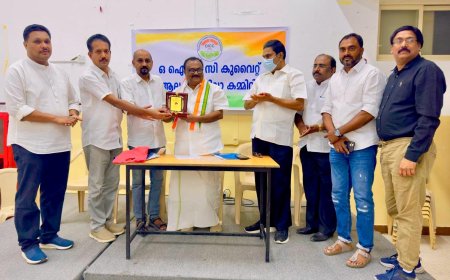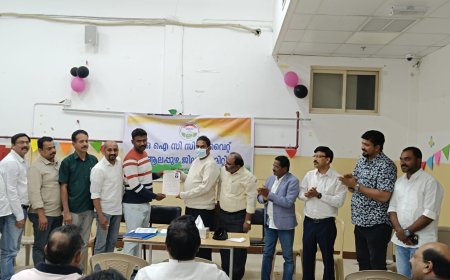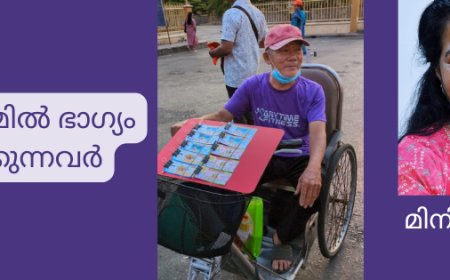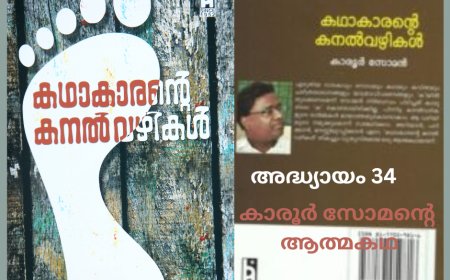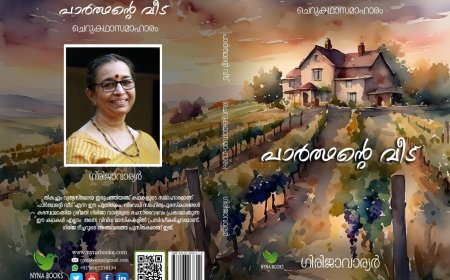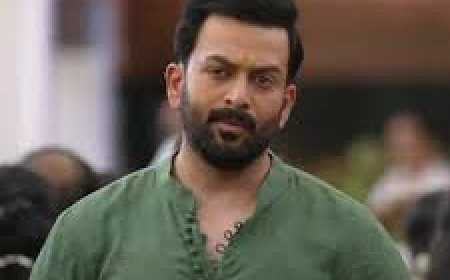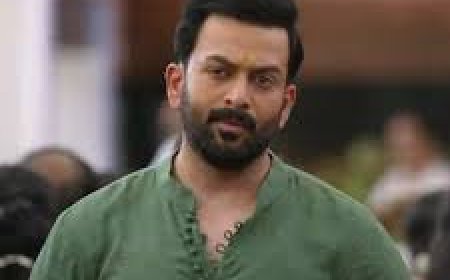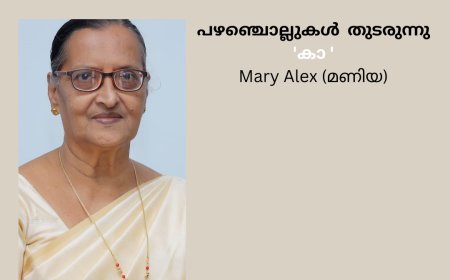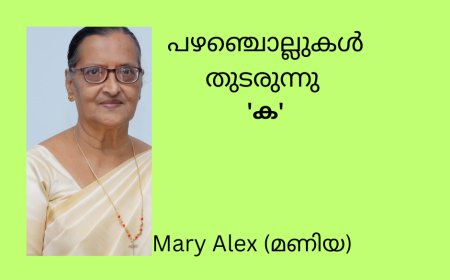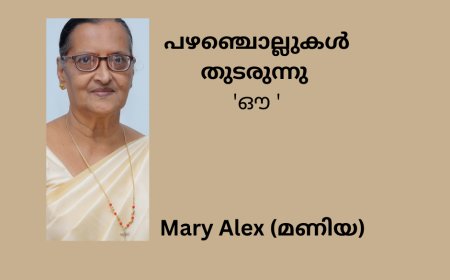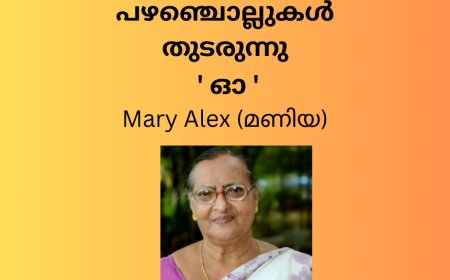Cinema and crime: Is Kerala overestimating the influence of films on its youth?
At the time that Ente Sooryaputhrikku, a Malayalam film that portrayed the ‘wayward’ ways of young women in colleges, came out, three girls were reported to have run away from home to lead similar lives – slip out at night, sing and dance with strangers, and be loud. In the early 1990s when the movie came out, it must have seemed cool that young women in Kerala, who were mostly restricted to their homes and colleges, could go out on their own and be merry. But packaged without warnings of the dangers of the world (to be fair, the film does not glorify the recklessness of youth), and with little exposure of what is out there, they would be ill-prepared for what lay ahead. Three decades later, the effects of cinema, of adored stars on the screen making everything they do look cool, continue to sway the impressionable young. It always has, agree most within the film industry, critics and observers. Only the Federation of Film Employees of Kerala (FEFKA)’s Directors Union has rejected the argument, calling such opinions weak and simplistic. The old question of cinema’s influence on the young has been raised once again, after Kerala reported a spate of violent crimes. The ages of the perpetrators and their victims are shockingly low – a 14-year-old’s suicide after alleged bullying at a Kochi school, a 16-year-old’s murder at the hands of a rival school gang in Kozhikode, the unspeakable injuries inflicted on a group of freshmen by seniors of a nursing college in Kottayam – all of it in the span of a few months. If you increase the age bar, there would be still more horrific stories to add, like the 23-year-old who murdered and attempted to murder six people, including close family, in Venjaramoodu of Thiruvananthapuram.The shocking recurrence of family killings in KeralaSpeaking in the Assembly on Monday, March 3, Chief Minister Pinarayi Vijayan offered examples for the “bad influence” that cinema and television can have on the young. He quoted the ‘Eda, mone’ line from Fahadh Faasil’s Aavesham, used by the protagonist, a gangster, to fondly address his young friends. “The ones who attack and murder the most are considered the heroes now, and kids watching them might think it is great to beat up everyone. A police report even mentions a similar incident where a rowdy lured young students to his gang with these words. [Television] serials also have a bad influence. Violence is being celebrated through these media, and that should be checked,” the Chief Minister said. The responsibility of keeping a check on films falls on the Central Board of Film Certification (CBFC), or the Censor Board. It follows the Cinematograph Act, 1952 and later amendments, to issue or not issue various categories of certificates that decide who can watch a movie. Initially, films were certified only either 'U' (unrestricted public exhibition) or 'A' (restricted to adults). In 1983, two more categories were added: ‘UA’ (unrestricted public exhibition subject to parental guidance for children below the age of 12) and ‘S’ (restricted to specialised audiences such as doctors or scientists). A film that recently won the ‘A’ certificate is Unni Mukundan’s Marco, which was explicit and extremely graphic in its show of violence. Unlike Aavesham, which was more an entertainer, Marco relied on shock value, proudly announcing itself as the most violent film to come out in Malayalam. Young viewers coming out of the theatre gushed about the bloodshed in the movie. It begged the question: is it movies that influence the young or were movies merely catering to the tastes of the young, who seem to get a high out of violent content? “Films have always been a reflection of society, specifically of the time period it is made in," says film critic GP Ramachandran. He speaks about the documentary series Angry Young Men on how Hindi film writers Salim Khan and Javed Akhtar made the action genre big in the 1970s with a series of movies led by the wounded, angry male heroes. “Javed Akhtar says in the documentary that they did not realise back then that these movies were in one way normalising dictatorship. In the 70s, there was a sentiment that favoured the Emergency. These movies catered to that idea. Similarly, the understanding that violence is the solution to everything has currency today, but that is again a normalisation of Hindutva fascism,” GP says. There is an opinion that nothing else could hook the newer generation of film lovers like violence. Director Kamal said in an interview that young viewers would get annoyed if films dwelled too much on emotional content, the way they did in an earlier era, touching on human relations. Today these are looked down upon, and they only get a high out of violence, he said. However, it would not be right to claim that there is a total disregard for other genres, given that Premalu – an out and out romantic comedy – ran successfully last year with a large number of young people filling the theatres. Vivek

AT the time that Ente Sooryaputhrikku, a Malayalam film that portrayed the ‘wayward’ ways of young women in colleges, came out, three girls were reported to have run away from home to lead similar lives – slip out at night, sing and dance with strangers, and be loud. In the early 1990s when the movie came out, it must have seemed cool that young women in Kerala, who were mostly restricted to their homes and colleges, could go out on their own and be merry.
But packaged without warnings of the dangers of the world (to be fair, the film does not glorify the recklessness of youth), and with little exposure of what is out there, they would be ill-prepared for what lay ahead.
Three decades later, the effects of cinema, of adored stars on the screen making everything they do look cool, continue to sway the impressionable young.
It always has, agree most within the film industry, critics and observers. Only the Federation of Film Employees of Kerala (FEFKA)’s Directors Union has rejected the argument, calling such opinions weak and simplistic.
The old question of cinema’s influence on the young has been raised once again, after Kerala reported a spate of violent crimes. The ages of the perpetrators and their victims are shockingly low – a 14-year-old’s suicide after alleged bullying at a Kochi school, a 16-year-old’s murder at the hands of a rival school gang in Kozhikode, the unspeakable injuries inflicted on a group of freshmen by seniors of a nursing college in Kottayam – all of it in the span of a few months. If you increase the age bar, there would be still more horrific stories to add, like the 23-year-old who murdered and attempted to murder six people, including close family, in Venjaramoodu of Thiruvananthapuram.
Speaking in the Assembly on Monday, March 3, Chief Minister Pinarayi Vijayan offered examples for the “bad influence” that cinema and television can have on the young. He quoted the ‘Eda, mone’ line from Fahadh Faasil’s Aavesham, used by the protagonist, a gangster, to fondly address his young friends.
“The ones who attack and murder the most are considered the heroes now, and kids watching them might think it is great to beat up everyone. A police report even mentions a similar incident where a rowdy lured young students to his gang with these words. [Television] serials also have a bad influence. Violence is being celebrated through these media, and that should be checked,” the Chief Minister said.
The responsibility of keeping a check on films falls on the Central Board of Film Certification (CBFC), or the Censor Board. It follows the Cinematograph Act, 1952 and later amendments, to issue or not issue various categories of certificates that decide who can watch a movie. Initially, films were certified only either 'U' (unrestricted public exhibition) or 'A' (restricted to adults). In 1983, two more categories were added: ‘UA’ (unrestricted public exhibition subject to parental guidance for children below the age of 12) and ‘S’ (restricted to specialised audiences such as doctors or scientists).
A film that recently won the ‘A’ certificate is Unni Mukundan’s Marco, which was explicit and extremely graphic in its show of violence. Unlike Aavesham, which was more an entertainer, Marco relied on shock value, proudly announcing itself as the most violent film to come out in Malayalam. Young viewers coming out of the theatre gushed about the bloodshed in the movie. It begged the question: is it movies that influence the young or were movies merely catering to the tastes of the young, who seem to get a high out of violent content?
“Films have always been a reflection of society, specifically of the time period it is made in," says film critic GP Ramachandran.
He speaks about the documentary series Angry Young Men on how Hindi film writers Salim Khan and Javed Akhtar made the action genre big in the 1970s with a series of movies led by the wounded, angry male heroes. “Javed Akhtar says in the documentary that they did not realise back then that these movies were in one way normalising dictatorship. In the 70s, there was a sentiment that favoured the Emergency. These movies catered to that idea. Similarly, the understanding that violence is the solution to everything has currency today, but that is again a normalisation of Hindutva fascism,” GP says.
There is an opinion that nothing else could hook the newer generation of film lovers like violence. Director Kamal said in an interview that young viewers would get annoyed if films dwelled too much on emotional content, the way they did in an earlier era, touching on human relations. Today these are looked down upon, and they only get a high out of violence, he said.
However, it would not be right to claim that there is a total disregard for other genres, given that Premalu – an out and out romantic comedy – ran successfully last year with a large number of young people filling the theatres.
Vivek, a 19-year-old college student from Kochi, rejects the theory that violence in movies like Marco is contributing to the rise in ‘young people raging’. He puts a large share of the blame on video game addiction and those movies and series that glorify violence in romance. “College movies in which characters resort to violence when their relationship is not going the way they want, might especially influence the behaviour of young people,” he adds.
Crimes of ‘romance’ – where romance is not really healthy relationship, but more in the line of stalking, upset exes, and such – continue to take place in chilling and unusual ways. A recent case that had shocked the public for multiple reasons, not least because it was perpetrated by a young woman, was the conviction of a 24-year-old for the murder of her boyfriend by poisoning that the court called “extremely brutal, gruesome, diabolical, and revolting”.
“There is a reason that we talk about political correctness in movies. Visual media, and not just movies but any video content including reels on the internet, can be a huge influence among students,” says Manu Remakant, professor of English at the SN College, Chempazhanthy.
He has heard parents of his students speak about the smartphone ‘addiction’ of their children, but Manu says there really is no way to control the use of these devices as their studies too depend on them. It is another factor that these students, though mostly living with and dependent on their parents, are adults.
“A lot of study material comes on phones, like Youtube videos the students should follow. So you cannot really control the use of these. What you can do as a parent is listen to them. Sometimes, parents too would be hooked to these devices, and not have time for the kids. Other than that, it is up to the discretion of the students on the kind of content that they watch,” Manu says.
It is a concern among parents of younger children that movie halls put no checks in place to restrict entry of children below the permissible age for UA category films. Suneetha Balakrishnan, a former member of the censor advisory panel in Kerala, says that even though panel members have the right to go to movie theatres and make inspections, this does not usually happen. “Once, a panel member reported that a part of the film that they had asked to cut was still retained in the film. Sometimes it happens that makers will continue to exhibit scenes that the panel had asked to remove for receiving a certain category of certificate. In the case of UA certification, it is up to the parents to take a call on whether they should take a child along for the movie,” she says.
Officer on Duty, a recent release starring Kunchacko Boban, contained a number of problematic visuals that many found unsuitable for children. But it was UA-certified and without checks in theatres, kids tagged along with their unsuspecting guardians. Vishak Nair, who plays a drug addict who is part of a gang of villains in the film, asserted during a television interview that the presentation of such characters matters. The makers of the film had made certain adjustments during the edits so that the screen presence of the villains would not give the wrong message, Vishak claimed.
As film critic Vijayakrishnan says, if a filmmaker finds that the violence in a film worked among the audience, they would increase the dose of such content in their next movie. He quotes the example of late South Korean filmmaker Kim Ki-duk who had been a favourite among the delegates of film festivals in Kerala, but whose films had finally become too violent for even the fans.
Another interesting observation that critic GP makes is about narratives focussing on the act of ‘disposing the body’ more than the crime itself. He cites films like Bougainvillea and Sookshmadarshini where the criminals employ despicable methods to get rid of the bodies, crucial evidence of their crimes.
“Many films do not cover the punishment meted out to the criminals, so a child [viewer] would see them walk away hassle-free from the scene of crime. In a post about Animal (a Hindi film that had infamously glorified misogyny and violence), made by a public relations team, they stated that there was no need to search for political correctness in the film. One, they are admitting that the film is politically incorrect; two, they understand that the film will be analysed for it; and three, they are dictating how to voice an opinion on the movie,” GP says.
He extends the theory to film reviewers, who appear to tone down their criticism to suit the interests of a power group in Malayalam cinema. According to him, many critics today, especially in the Malayalam media, adopt a lenient tone, and are cautious in their reviews of films, thereby playing a role in the issue. Few call out the problematic content, for fear of displeasing the power group in the industry, he says.
As director Kamal said, this ‘power group’ of men could together put an end to it if they decide to not do such films anymore, but they would not do that for commercial benefits. Aashiq Abu, recognised among the newer generation of directors, said that filmmakers should also own responsibility and respond maturely to criticism. His latest film Rifle Club, which contained a lot of shooting and killing, was made with the idea of being seen like a video game, he said.
All that said, it is commonly agreed that films alone should not be blamed for influencing young minds in the way they act or appear. Even news broadcasts employ disturbing graphics, or visuals without discretion, often insensitively. As director Jeethu Joseph said in an earlier interview with TNM, filmmakers don't try to promote crime, they just make films based on what they see around them.
The blame game can go on back and forth like that, without a practical solution. Leaving it all to the Censor Board may not help matters, for as the FEFKA and many critics have previously pointed out, the interference can turn political and result in curtailing the freedom of expression.













